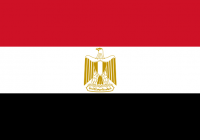


Egypt
Egypt, a country linking northeast Africa with the Middle East, dates to the time of the pharaohs. Millennia-old monuments still sit along the fertile Nile River Valley, including the colossal Pyramids and Sphinx at Giza and the hieroglyph-lined Karnak Temple and Valley of the Kings tombs in Luxor. It has a population of 82 million people and GDP per capita of USD 3,314 (2013).
Egypt is a lower-middle income country. While Egypt has a low HIV general prevalence, it is concentrated among men who have sex with men and people who inject drugs. As in other countries of the Middle East and North African region, AIDS-related deaths and new infections are on the rise in Egypt, due to a number of high-risk behaviours and rapid changes in the Egyptian socio-cultural context. TB is an important public health concern. There has been a significant decrease of incidence in recent years, but case notification rates continue to decline.
AHO PRIORITIES FOR HEALTH DELIVERY PLAN IN EGYPT
- Africa Health Insurance
- Public health information system, neonatal and adolescent health information systems, hospital information systems and management information system (MIS).
- Regulation/accreditation (EMT, Drug Formulary, Dental Act, and others).
- Strategic planning, monitoring, and evaluation.
- Family health: Healthy Schools Initiative; mental health; chronic noncommunicable diseases; violence; and injury prevention.
- Comprehensive care for HIV/AIDS.
- Disaster preparedness.
Environmental health.
PROGRAMMES & PROJECTS
1. HEALTH SYSTEMS STRENGTHENING
PURPOSE
To strengthen the public health care system to provide comprehensive quality care to individuals and population groups based on health promotion and disease prevention criteria.
EXPECTED RESULTS
- Planning unit capacity strengthened.
- Primary care delivery system strengthened to provide comprehensive care.
- Public health sector capacity strengthened in human resource management.
- PHA planning and management capacity strengthened.
- Quality Improvement Program strengthened.
- Support services strengthened to ensure quality health care.
- Emergency Unit strengthened for strategic planning and management and AHO disaster preparedness capacity improved.
2. EVIDENCE-BASED DECISION MAKING
PURPOSE
To strengthen the capacity of AHO to direct and manage the Health Information System and Network strategically
EXPECTED RESULTS
- Capacity of AHO strengthened to collect, analyse, integrate, and evaluate information from different sources.
- Comprehensive surveillance system strengthened.
- Hospital-based information systems strengthened.
- Improved public health sector capacity to conduct research in public health.
3. CHILD AND ADOLESCENT HEALTH
PURPOSE
To reduce child and adolescent morbidity and mortality
EXPECTED RESULTS
- Neonatal resuscitation capability improved at PMH and the Rand.
- Health of preschool children and first graders improved.
- Adolescent health services improved.
- Detection and management of child abuse improved.
4. HEALTH OF THE ADULT
PURPOSE
To improve the management of diabetes and hypertension and of breast, cervix, and prostate cancer programs.
EXPECTED RESULTS
- Management of diabetes and hypertension improved.
- Programs for the early detection and management of breast, cervix, and prostate cancer improved.
- Management of STIs and HIV/AIDS improved.
- Health education programs concerning hypertension and cervix and prostate cancer.
- Community mental health program strengthened.
5. ENVIRONMENTAL HEALTH
PURPOSE
To improve the effectiveness of the managerial staff of all programs, particularly those related to vector control and water quality.
EXPECTED RESULTS
- Managerial capacity of senior and middle managers improved.
- Water quality standards and supporting legislation developed.
- Environmental Health Information System developed.
- Vector control and food safety programs improved.
RESOURCES (USD)
AHO EGYPT BUDGET 2020 (USD million)* based on 2017 pop 97.55 million World Bank
| SO | BUDGET ITEM | AMOUNT* |
| 1 | Combating communicable diseases |
1,725 |
| 2 | Tackling non communicable diseases |
2,100 |
| 3 | Addressing determinants of health & risk factors |
1,550 |
| 4 | Modernising health system and health service |
1,320 |
| 5 | Improving preparedness, surveillance and response |
1,420 |
| 6 | Developing good governance & corporate services |
1,640 |
| Total |
9,755 |
AHO estimates that it needs to spend at least USD100 per capita on health to meet the basic health needs of the people in Africa. This is too far below developed countries e.g. in England it is US$1,300 per capita (2017)

